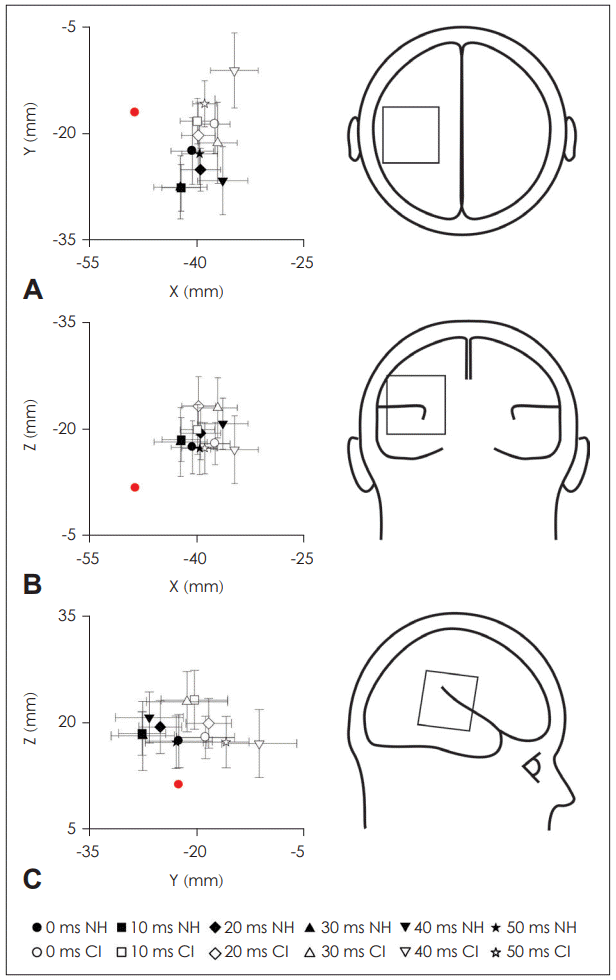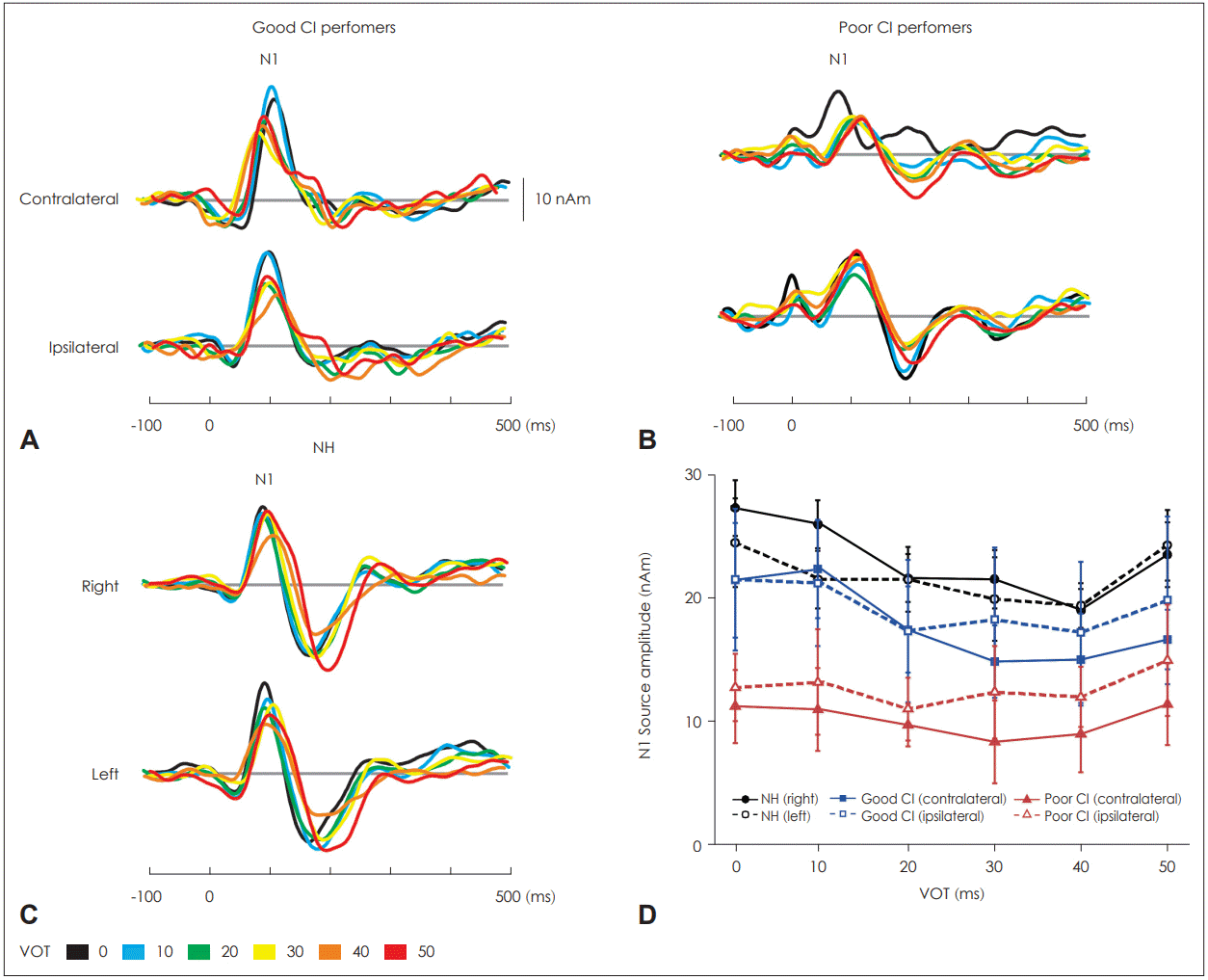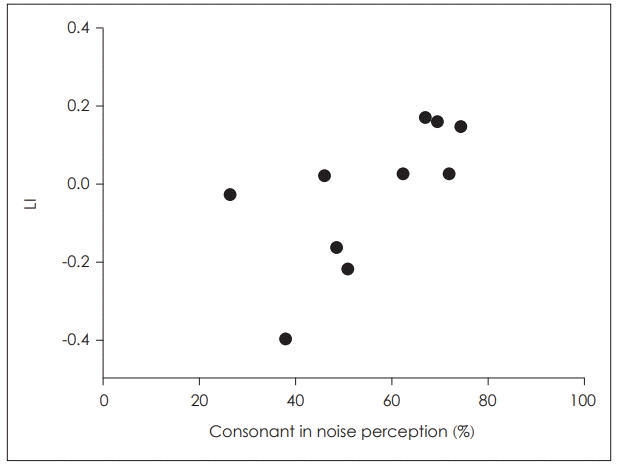1. Giraud AL, Price CJ, Graham JM, Frackowiak RS. Functional plasticity of language-related brain areas after cochlear implantation. Brain. 2001; 124(Pt 7):1307–16.

2. Debener S, Hine J, Bleeck S, Eyles J. Source localization of auditory evoked potentials after cochlear implantation. Psychophysiology. 2008; 45(1):20–4.

3. Pantev C, Ross B, Berg P, Elbert T, Rockstroh B. Study of the human auditory cortices using a whole-head magnetometer: Left vs. right hemisphere and ipsilateral vs. contralateral stimulation. Audiol Neurootol. 1998; 3(2-3):183–90.

4. Gordon KA, Wong DDE, Papsin BC. Bilateral input protects the cortex from unilaterally-driven reorganization in children who are deaf. Brain. 2013; 136(Pt 5):1609–25.

5. Jiwani S, Papsin BC, Gordon KA. Early unilateral cochlear implantation promotes mature cortical asymmetries in adolescents who are deaf. Hum Brain Mapp. 2016; 37(1):135–52.

6. Lazard DS, Lee HJ, Truy E, Giraud AL. Bilateral reorganization of posterior temporal cortices in post-lingual deafness and its relation to cochlear implant outcome. Hum Brain Mapp. 2013; 34(5):1208–19.

7. Kang E, Lee DS, Lee JS, Kang H, Hwang CH, Oh SH, et al. Developmental hemispheric asymmetry of interregional metabolic correlation of the auditory cortex in deaf subjects. Neuroimage. 2003; 19(3):777–83.

8. Gilley PM, Sharma A, Dorman MF. Cortical reorganization in children with cochlear implants. Brain Res. 2008; 1239:56–65.

9. Doucet ME, Bergeron F, Lassonde M, Ferron P, Lepore F. Crossmodal reorganization and speech perception in cochlear implant users. Brain. 2006; 129(Pt 12):3376–83.

10. Hauthal N, Sandmann P, Debener S, Thome JD. Visual movement perception in deaf and hearing individuals. Adv Cogn Psychol. 2013; 9(2):53–61.

11. Picton TW. Human auditory evoked potential. 1st ed. San Diego, CA: Plural Publishing Inc;2011. p. 1–634.
12. Wolpaw JR, Wood CC. Scalp distribution of human auditory evoked potentials. I. Evaluation of reference electrode sites. Electroencephalogr Clin Neurophysiol. 1982; 54(1):15–24.

13. Dimitrijevic A, Pratt H, Starr A. Auditory cortical activity in normal hearing subjects to consonant vowels presented in quiet and in noise. Clin Neurophysiol. 2013; 124(6):1204–15.

14. Sharma A, Dorman MF. Cortical auditory evoked potential correlates of categorical perception of voice-onset time. J Acoust Soc Am. 1999; 106(2):1078–83.

15. Iverson P. Evaluating the function of phonetic perceptual phenomena within speech recognition: An examination of the perception of /d/-/t/ by adult cochlear implant users. J Acoust Soc Am. 2003; 113(2):1056–64.

16. Park JH, Han JH. Behavioral perception and neural correlates of categorical perception in cochlear implant users. Korean J Otorhinolaryngol-Head Neck Surg. 2018; 61(1):15–23.

17. Hine J, Debener S. Late auditory evoked potentials asymmetry revisited. Clin Neurophysiol. 2007; 118(6):1274–85.

18. Pantev C, Dinnesen A, Ross B, Wollbrink A, Knief A. Dynamics of auditory plasticity after cochlear implantation: A longitudinal study. Cereb Cortex. 2006; 16(1):31–6.

19. Pantev C, Bertrand O, Eulitz C, Verkindt C, Hampson S, Schuierer G, et al. Specific tonotopic organizations of different areas of the human auditory cortex revealed by simultaneous magnetic and electric recordings. Electroencephalogr Clin Neurophysiol. 1995; 94(1):26–40.

20. Sharma A, Gilley PM, Dorman MF, Baldwin R. Deprivationinduced cortical reorganization in children with cochlear implants. Int J Audiol. 2007; 46(9):494–9.

21. Yamazaki H, Easwar V, Polonenko MJ, Jiwani S, Wong DDE, Papsin BC, et al. Cortical hemispheric asymmetries are present at young ages and further develop into adolescence. Hum Brain Mapp. 2018; 39(2):941–54.

22. Kral A, Sharma A. Developmental neuroplasticity after cochlear implantation. Trends Neurosci. 2012; 35(2):111–22.

23. Han JH, Zhang F, Kadis DS, Houston LM, Samy RN, Smith ML, et al. Auditory cortical activity to different voice onset times in cochlear implant users. Clin Neurophysiol. 2016; 127(2):1603–17.

24. Kelly AS, Purdy SC, Thorne PR. Electrophysiological and speech perception measures of auditory processing in experienced adult cochlear implant users. Clin Neurophysiol. 2005; 116(6):1235–46.

25. Sandmann P, Eichele T, Buechler M, Debener S, Jäncke L, Dillier N, et al. Evaluation of evoked potentials to dyadic tones after cochlear implantation. Brain. 2009; 132(Pt 7):1967–79.

26. Kral A, Eggermont JJ. What’s to lose and what’s to learn: Development under auditory deprivation, cochlear implants and limits of cortical plasticity. Brain Res Rev. 2007; 56(1):259–69.

27. Abbas PJ, Brown CJ. Electrically evoked auditory brainstem response: Refractory properties and strength-duration functions. Hear Res. 1991; 51(1):139–47.
28. Hirschfelder A, Gräbel S, Olze H. Electrically evoked amplitude modulation following response in cochlear implant candidates: Comparison with auditory nerve response telemetry, subjective electrical stimulation, and speech perception. Otol Neurotol. 2012; 33(6):968–75.
29. Lundin K, Stillesjö F, Rask-Andersen H. Prognostic value of electrically evoked auditory brainstem responses in cochlear implantation. Cochlear Implants Int. 2015; 16(5):254–61.








 PDF
PDF Citation
Citation Print
Print





 XML Download
XML Download